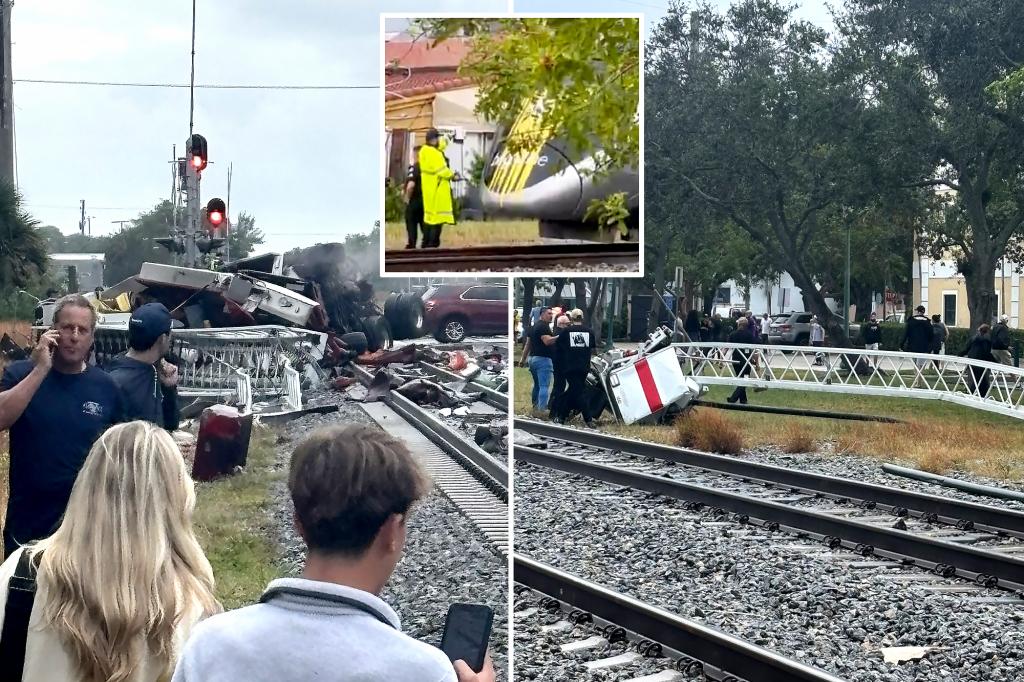The incident involving a Brightline high-speed train and a Delray Beach Fire Rescue ladder truck on a Saturday morning underscores the inherent risks associated with railway crossings and the potential for devastating consequences when safety protocols are compromised or unforeseen circumstances arise. This collision, resulting in injuries to both firefighters and train passengers, serves as a stark reminder of the importance of rigorous safety measures, comprehensive training programs, and public awareness campaigns to mitigate the risks inherent in these complex environments. Furthermore, it highlights the necessity of thorough investigations to determine the root causes of such incidents, enabling the implementation of corrective actions and preventative measures to enhance safety for all stakeholders.
The collision occurred at approximately 10:45 a.m. near the intersection of East Atlantic Avenue and Railroad Avenue in Delray Beach, Florida, a location situated within the Brightline high-speed rail corridor connecting Miami and Orlando. The impact resulted in injuries to three firefighters, who were subsequently transported to a local hospital in stable condition. Additionally, twelve train passengers sustained minor injuries and received appropriate medical attention. The incident immediately prompted a multi-agency investigation involving the Delray Beach Police Department, Brightline officials, and the National Transportation Safety Board (NTSB), aiming to reconstruct the sequence of events leading to the collision and identify contributing factors.
The intersection where the accident occurred represents a typical interface between road traffic and railway operations, raising critical questions about the adequacy of existing safety infrastructure and protocols. Railway crossings, by their very nature, present inherent risks due to the convergence of high-speed trains and vehicular traffic. The presence of emergency vehicles, such as fire trucks responding to incidents, further complicates the dynamics at these intersections, necessitating clear communication channels and well-defined procedures to ensure the safety of both emergency responders and the public.
The investigation into the collision will likely encompass a detailed analysis of various factors, including the operation of the train’s safety systems, the actions of the train crew and the firefighters, the visibility conditions at the crossing, the functionality of warning signals and gates, and any potential communication breakdowns between involved parties. The NTSB, as the lead federal agency responsible for investigating transportation accidents, will meticulously examine the available evidence, including onboard recordings, eyewitness accounts, and physical evidence from the scene, to determine the probable cause of the accident and recommend safety improvements to prevent similar incidents in the future.
The broader context surrounding this incident highlights the growing concerns about safety along high-speed rail corridors. As high-speed rail networks expand across the country, the frequency of interactions between trains and vehicles at crossings inevitably increases, magnifying the potential for accidents. This necessitates a comprehensive approach to safety that encompasses infrastructure improvements, technological advancements, and enhanced training programs for both railway personnel and emergency responders. Public awareness campaigns are also essential to educate drivers and pedestrians about the risks associated with railway crossings and the importance of adhering to safety rules.
The aftermath of this collision underscores the need for continuous vigilance and proactive measures to enhance safety at railway crossings. Lessons learned from this incident, coupled with recommendations from the NTSB investigation, can inform the development of improved safety protocols and infrastructure designs to minimize the risks of future collisions. The goal must be to create a safer environment for all stakeholders, including train passengers, vehicle drivers, pedestrians, and emergency responders, ensuring that railway crossings function effectively and safely as critical points of intersection between transportation modes. Furthermore, the incident serves as a reminder of the critical role of communication and coordination between emergency services and railway operators in mitigating risks and responding effectively to incidents at these complex intersections.










